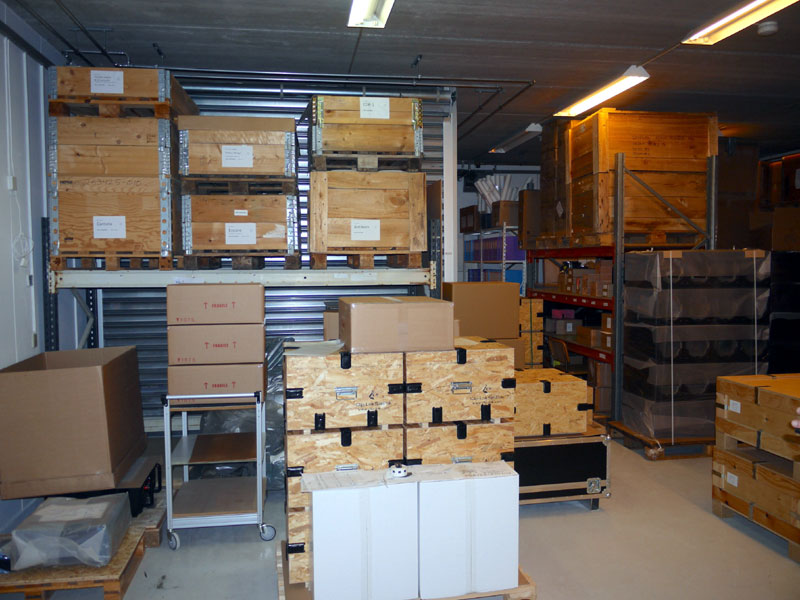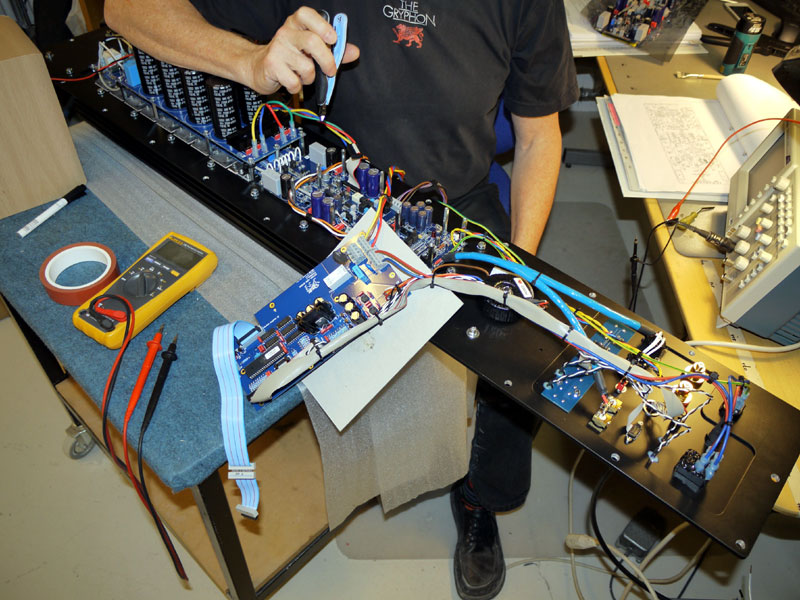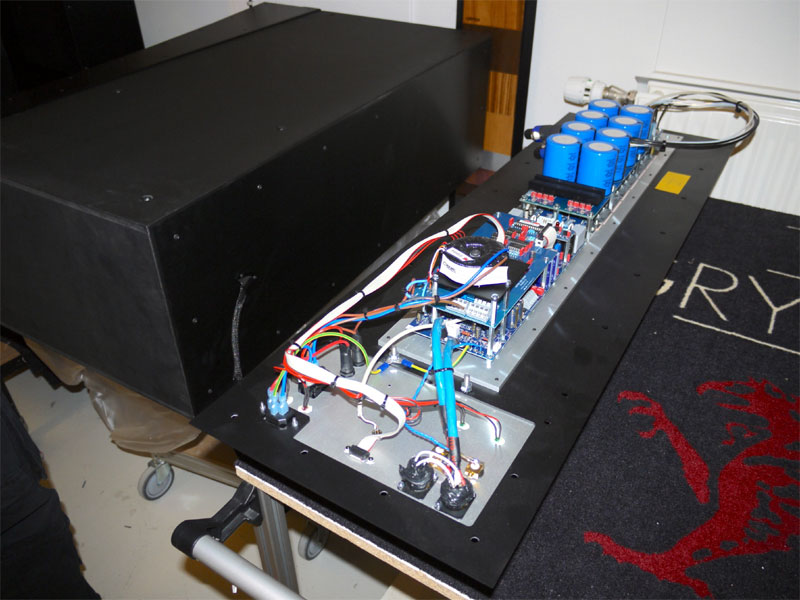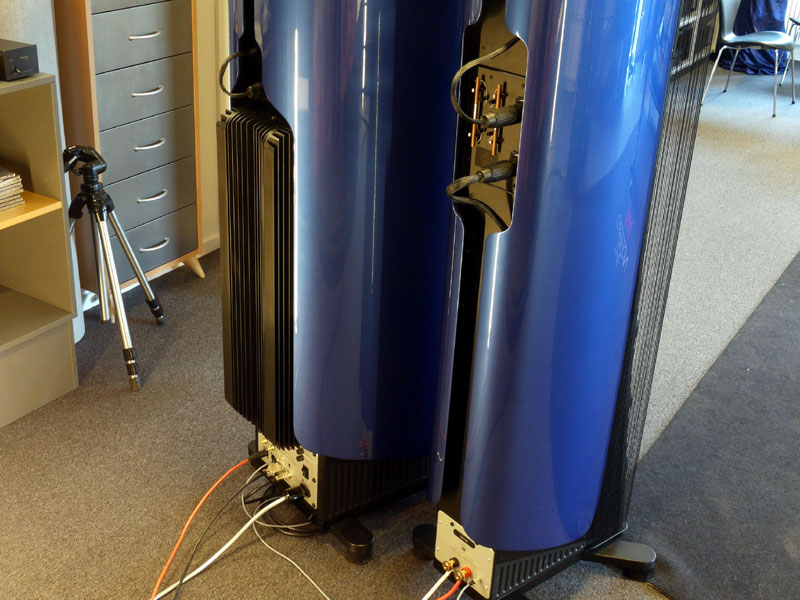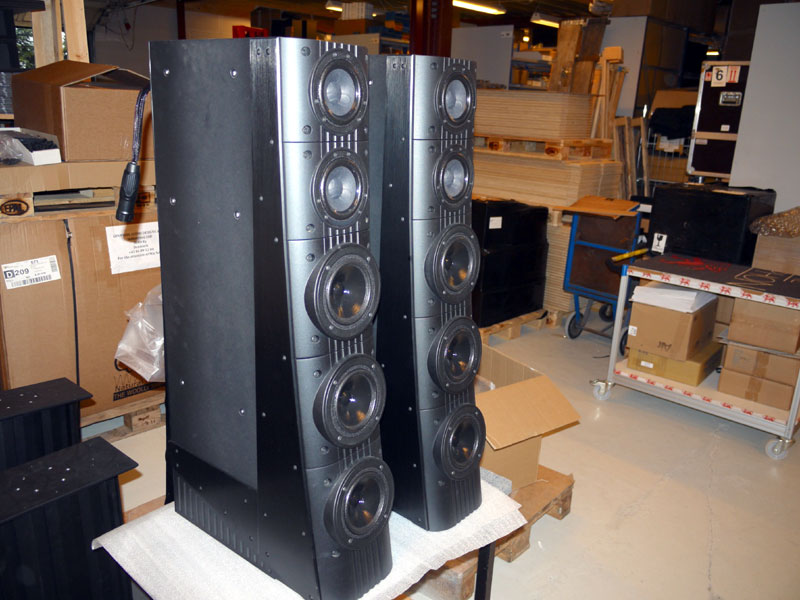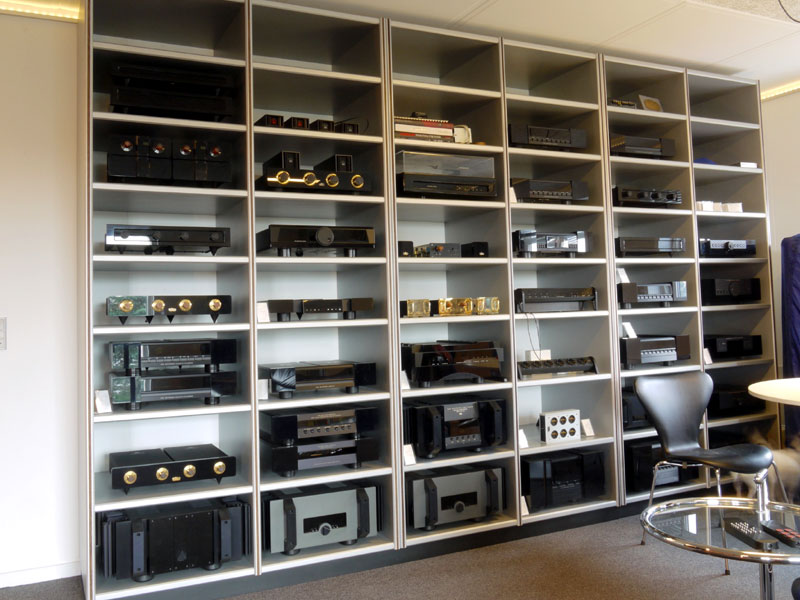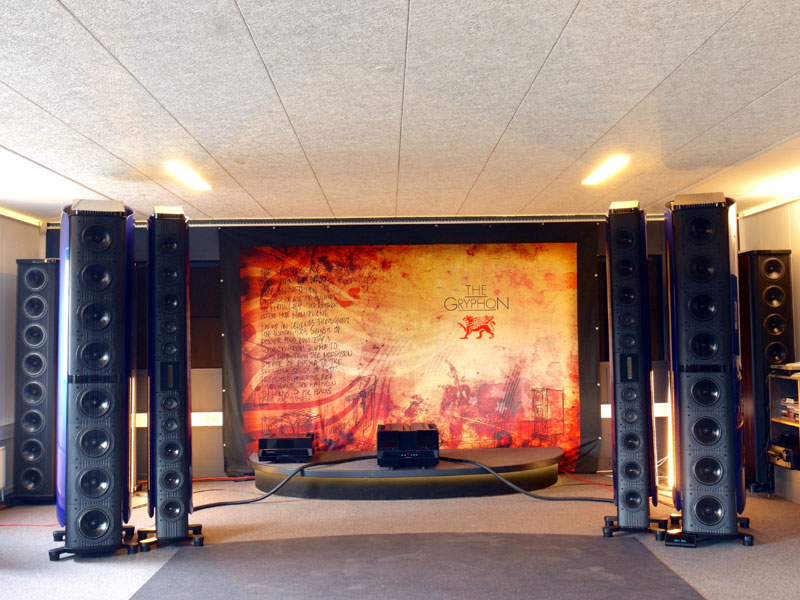Gryphon Audio: History That Casts a Long Shadow
These days, with the company under new management, it’s not just the product range that’s bigger; the products offer an impressive combination of size and physical presence too, matched by impressive output capabilities, whether you want to talk power or heat dissipation. Lift the lid on a Gryphon amp and the interior is packed with componentry. These are big, complex products that deliver big, complex performances with ease and stability that are as musically impressive as they are compelling. From the intricate contours of their sculpted casework to the massive power-supply components and heatsinks essential to their class-A operation, from the interwoven wiring looms to the densely packed, fully complementary circuit boards, Gryphon amps are an object lesson in just how complicated and exacting high-powered, solid-state designs can be.
As a result, production is entrusted to a specialist OEM aerospace producer with the client base and scale to invest in the technology and machinery to streamline such complex tasks and perform them consistently -- even with the massive slabs of circuitry, heatsinking and huge transformers that go into Gryphon power amps. Believe me, just handling such heavy components without damaging the fragile and flawless finish is an art in itself. Of course, each and every finished product is soak-tested at the production house before shipping to Gryphon’s office/production facility, where it undergoes a second round of testing and quality-control checks. Visitors to the Gryphon HQ expecting to see long assembly lines loaded with half-finished chassis and banks of wave-soldering machines are going to be disappointed. What they will see is a warehouse stacked with crates of product tested and waiting to ship.
The end result of all this effort is a comprehensive range of products as unmistakable as they are physically impressive, a family in more than just name. Few brands offer the same visually coherent identity and finish, stretching from the most affordable to the most extravagant offerings. Indeed, one of Gryphon’s most impressive achievements is to create a comprehensive range of units that it’s almost impossible to rank purely on appearance, the entry-level Diablo 120 and 300 integrated amplifiers ($11,200 and $16,000, respectively) indistinguishable in the quality of their fit, finish and appearance from their bigger and more ambitious brethren.
If amplifiers constitute the heart of Gryphon production, then loudspeakers have stolen more than a little of its soul. The company’s speakers might not have been around as long as their electronics and may not enjoy the same legendary status, but in part at least that’s because they are so often seriously underrated. Outwardly big but conventional, Gryphon’s loudspeaker designs are, in fact, just as individual, eclectic and philosophically focussed as the electronics, reflecting the thinking of Flemming Rasmussen’s longtime collaborator, Steen Duelund. Cast an eye across the designs and common features quickly emerge, from the curved, time-aligned baffles with their symmetrical driver arrays to the constant-phase crossovers (pioneered by Duelund) and the employment of active bass with adjustable settings for level and Q. It’s a recipe for musical integrity and domestic integration, qualities that are so often the first casualties in extravagant speaker designs.
Like most high-end makers, Gryphon uses custom-specified drivers and buys its cabinets, but assembly and the addition of electronics modules are done in-house. Electronics? As I’ve already mentioned, most Gryphon speaker designs have been partially active, an approach that has become considerably more common in recent years. However, there’s active bass -- and then there’s active bass. No class-D modules or DSP here. The Gryphon speakers (perhaps not surprisingly, given the company’s core business) are equipped with powerful, linear-power-supply, class-AB amplifier boards built into the rear of the low-frequency enclosures. In the case of the flagship Kodo ($390,000 for the system) that adds up to 1000Wpc continuous output capability, with a peak power of over 4000 watts available on demand -- all dedicated to the eight drivers in each low-frequency tower. Those substantial heatsinks on the back of the modules are not just for show.
The range from midbass upwards is covered by the symmetrical midrange-treble arrays, each with three cabinets and eleven drivers to add to the two cabinets that comprise each bass tower. That’s a total of 38 drivers, ten cabinets, a pair of passive crossovers, two bass amps with integrated active bass filtering, as well as all the umbilicals to tie the whole lot together. Just looking at the space required to lay out the constituent components for a single pair of Kodo midrange cabinets will give you significant pause for thought. It makes for quite a jigsaw puzzle -- one that is not only demanding to get exactly right but is ruthless in exposing any errors in assembly, with possibly catastrophic results. Lacing together the components that make up a pair of Kodos is part mechanic and part electric, part engineering and part art. With this much energy present -- whether you are thinking in terms of air pressure or mechanical vibration, stored energy in the amplifier power supply or residual energy flow within the baffles and cabinet -- you need to understand and respect all of the conflicting forces at work. It’s a job for cool heads and experienced hands, which helps explain why it is the one part of the production process that stays firmly on the premises.
Having spent some time discussing and gaining an understanding of Gryphon’s history and how it works, as well as seeing firsthand what goes into their speakers, it was finally time to meet the main subject of this visit in person -- the four imposing towers of power that constitute a fully operational Kodo system. But before that there was time for one more example of just what sets Gryphon apart from the crowd. Entering the company's listening room, you pass a storage wall, its 48 individual slots populated with a range of Gryphon products, past and present, from the original head amp onwards. It’s a display that brings home just how unified the brand’s visual identity really is. You could take any of these products and sit it alongside the current line without any of the jarring culture clash or aesthetic discontinuity. Proportions to materials, contoured fascias, dual-mono construction, those blocky shoulders: these products are -- and could only be -- Gryphons. It all underlines in a way that nothing else really could be, the aesthetic discipline that informs everything that Gryphon produces, product of Flemming Rasmussen’s education and background in fine arts and industrial design, an approach that has informed every step. Mind you, there are a few interlopers. Look closely and you’ll spy a Goldmund Studio, unsung hero of the Swiss company’s turntable line. On the shelf above it there’s a circular wooden box peeking into view. Aficionados will instantly recognize a Kiseki container, although it’s not until you reach up and lift it down that you realize it contains a pristine sample of the rare but wonderful Kiseki Lapis Lazuli. Somewhat surprisingly, handling the precious object fails to provoke alarms, flashing lights or slamming security shutters. Instead, it elicits a wry grin from the head Gryphon as he laments the increasingly erratic performance of the T3F tonearm mounted on the Goldmund deck. What, he muses, would be a suitable 'arm with which to replace it? Apparently, he harbors a quiet ambition to take the deck (and cartridge) to Munich and use them for Gryphon’s show presentations. This is a telling episode, not only because the presence of both deck and cartridge show just how long and how firmly Gryphon has been present at the highest end of the audio world, but because it reveals a remarkable lack of sentimentality. These products -- all of these products, whether from Gryphon or not -- exist only in so far as they can further the reproduction of music. Collector's item or not (and both of these pieces are collector's items for very good reasons), there’s no room for passengers and no resting on laurels or past glories. It’s that rigor and discipline again, the performance whip that is being constantly cracked.
Finally settling down to enjoy the Kodos is a philosophical drive that’s equally apparent in both their appearance and performance. Each wrapped in its curved, bright Bugatti-blue carapace, these speakers have an inherent elegance, the sheer height of the enclosures helping them appear slimmer than they really are and all the more statuesque. They may look big in the pictures, but, believe me, they’re bigger in the flesh. Indeed, with the Kodos at just under 240cm tall (or a little under eight feet), it’s worth measuring the height of your ceilings if you are seriously entertaining a pair of Gryphon’s flagship speakers. That sculpted, if muscular, appearance, lean and poised, does nothing to prepare you for the sheer scale and power that they produce. Previous experience with Gryphon systems, and in particular the class-A amplifiers, meant that I was ready for the uninhibited dynamics and sense of unlimited headroom, the easy rhythmic articulation and lack of glare, the velvety blackness of the background. I just wasn’t expecting the effortless weight and impact of the Kodo’s bottom end, the cavernous depth and air it brought to orchestral soundstages, the sheer presence and solidity with which it presented performers. The generous low-frequency amplification and sixteen 8" drivers create the potential for bottom-end extension down to 16Hz (although that will be room dependent). Delivering that potential and actually integrating it with the rest of the range is the challenge -- a challenge the Kodo encompasses without breaking stride. The adjustable bass settings, remote controllable from the listening seat, complete with digital readout of selected values, certainly plays its part, as does the ability to position the low-frequency enclosures independent of the midrange arrays, so that both low-frequency performance and soundstaging can be independently optimized. But it’s the coherent thinking that embraces every aspect of the design that binds the whole thing together. The result is a musical whole that’s actually greater than the considerable sum of the parts, allowing all those carefully selected components, whether it’s the Mundorf AMT tweeter, the proprietary midbass drivers or the Duelund graphite resistors used to trim the tweeter level, to work toward a single goal. Of course, the presence of a Kalliope DAC ($25,000), Pandora preamp ($32,500) and Mephisto stereo power amp ($61,000), along with a complete suite of Gryphon’s own cables, all played their part, but what was really impressive was the way this system, for all its massive size and weight, heat and power, simply disappeared behind the music. Making four eight-foot towers invisible is quite a trick, but that’s exactly what Gryphon achieved. With familiar tracks, the more I listened, the more I was impressed, not so much with the gargantuan scale and thunderous low-frequency power -- although, Lord knows, those were impressive enough, on an almost physical level -- but with how small this system could sound -- how fragile, delicate and nuanced. From medieval harmonies to solo violin, piano duets to the most delicate of percussion accents, there always seemed to be time and space for the notes to happen, beautifully projected against that black backdrop. With control over both electronics and transducers, the Gryphon design team is able to take command of the system noise floor, with stunning effect. Faced with a system this capable and this physically imposing, it’s tempting to reach for the biggest piece of music you can -- something the Kodos are only to happy to deliver -- but in doing so you risk missing the point. With the Starker Bach Cello Suites [Mercury UCCD 4753/4], the solo instrument was close and vibrant, woody and resonant, just as it should be, yet without ever becoming oversized or overblown -- a common tendency on big systems. Smaller still, the Chaconne from Bach’s Partita No.2 [Mirare MIR128] displayed all the controlled technical poise and intensity that make Sayaka Shoji such an electrifying performer. The easy grace with which she plays (and the system responded) captured the full expressive range of this demanding masterwork with not a false step or edge, without a wrong note or jarring double stop. Her minute yet perfectly judged changes in bow pressure and level were vividly realized, and listening to that final note decay, I really appreciated the sound of silence. Listening to Gryphon’s latest flagship speaker reinforced the benefits of a well-executed, total system approach. The Gryphon setup is not without character, nor is it above sonic criticism. It is not as airy as some, or as finely etched, if that’s your thing. But what it allows is music to be just as direct and powerful as it needs to be, whether that power derives from sheer level or emotional intensity. The speakers do big without breaking a sweat, offering awesome headroom and scale, a complete absence of strain; but they also do small and intimate, with delicacy, articulation and immediacy that are simply remarkable when juxtaposed against the speakers' physical presence. And they do it all with dimensionality and solidity, a sense of musical ebb and flow that has been the hallmark of Gryphon components and, even more, full systems from day one. That holistic quality is lodged in design integrity that is more than just skin deep. The outward evidence might be as impressive as it is hard to miss, but it’s also just a visual manifestation of a design-led, philosophically cogent approach to audio reproduction that has evolved and matured over the years. If the Kodo is just the latest
vintage, this quick taste has convinced me to lay in stock for future consumption. In a
market where high-end prices seem to be spiraling ever upward, beyond any rational
control, despite its elevated asking price, the Kodo actually represents remarkable
musical value. It’s a reality that’s not lost on customers, judging from the
back-ordered status of the product. Naturally, customers come first, but if Gryphon ever
manages to free up a pair of Kodos for review (not to mention the associated electronics
to go them), I’ll be first in line. In fact, I’ll be camping outside their
office door. |


